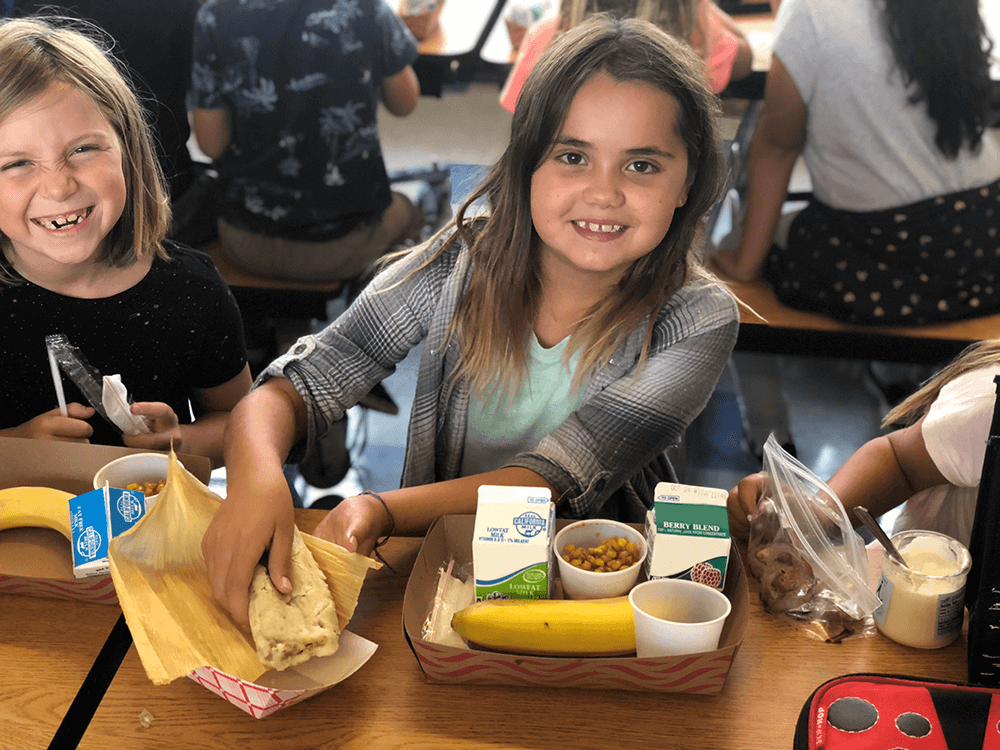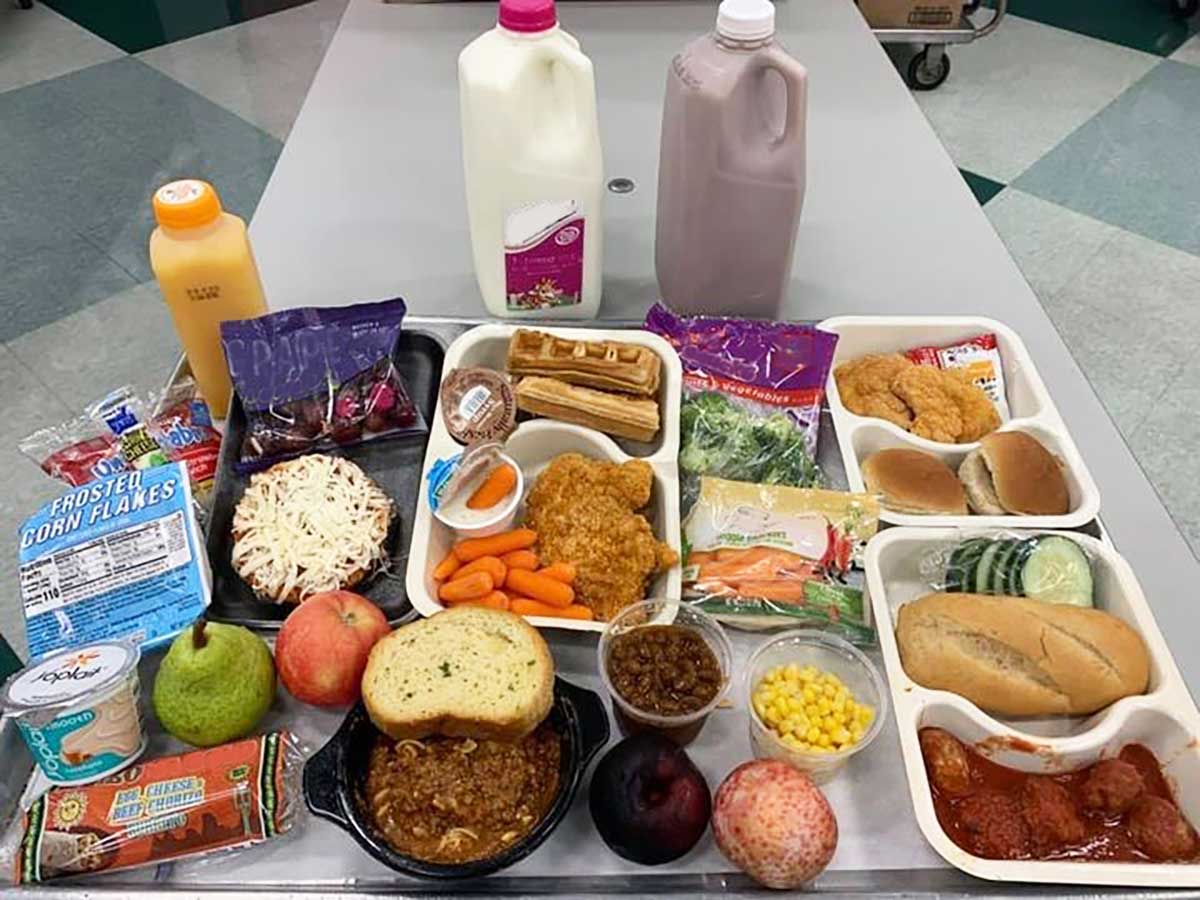By: Heather Berkoben

The coronavirus pandemic disrupted local communities across the nation, exacerbating the challenges millions of families already face, including food insecurity. It is estimated that more than 50 million people live with food insecurity, including 17 million children.1 To help, dedicated school nutrition professionals have worked tirelessly to support families in their communities, providing free meals to children under age 18 as part of the school meal program. In 2018–2019, California school meals fed nearly 5 million students each day, playing an important role in helping combat child hunger and supporting individual and community resiliency.2 As rates of food insecurity continue rise, school meals are more important than ever.
School Meal Programs
 School nutrition programs
operate year-round, providing students with high-quality, nutritious foods. School meals support all students, but especially those living in socioeconomically disadvantaged communities. As a reliable source of essential nutrients, school meals support
overall health, improve concentration and memory, increase alertness and achievement in reading and math, and improve scores on standardized tests—all of which can expand children’s educational opportunities.
School nutrition programs
operate year-round, providing students with high-quality, nutritious foods. School meals support all students, but especially those living in socioeconomically disadvantaged communities. As a reliable source of essential nutrients, school meals support
overall health, improve concentration and memory, increase alertness and achievement in reading and math, and improve scores on standardized tests—all of which can expand children’s educational opportunities.
Today, school nutrition programs feed over 1.5 billion meals each year through National School Breakfast, National School Lunch, Afterschool Snack Service, Afterschool Meal, Summer Food Service, and Fresh Fruit and Vegetable programs.3 With the pandemic, the need for these programs has increased, which is why federal waivers are in place to provide free meals to all children age 18 and younger, regardless of income and legal status through the end of the 2020–2021 school year.
When school lets out for summer, millions of children typically lose access to the school breakfasts and lunches they rely on for nourishment, which means they risk going hungry. Fortunately, that is when the Summer Food Service Program begins. These meals help fill the summer gap to ensure that children continue to receive nutritious meals when school is not in session.4
Schools as Nutrition Hubs
 Communities have changed over the years, and in response, school districts have evolved to meet the needs of their
students and families, transforming to support the larger community by serving as a nutrition hub. Understanding the impact of the pandemic on many families, schools have been driving awareness to food access options like the CalFresh Healthy Living
program, Special Supplemental Nutrition Program for Women, Infants and Children, Pandemic EBT and school food pantries to help families access foods in a stigma-free environment. By expanding how they are supporting families and providing all families
with additional resources to access food and financial support without stigma or judgement, school communities are making great strides toward supporting and achieving nutrition equity in their communities.
Communities have changed over the years, and in response, school districts have evolved to meet the needs of their
students and families, transforming to support the larger community by serving as a nutrition hub. Understanding the impact of the pandemic on many families, schools have been driving awareness to food access options like the CalFresh Healthy Living
program, Special Supplemental Nutrition Program for Women, Infants and Children, Pandemic EBT and school food pantries to help families access foods in a stigma-free environment. By expanding how they are supporting families and providing all families
with additional resources to access food and financial support without stigma or judgement, school communities are making great strides toward supporting and achieving nutrition equity in their communities.
For instance, at Oceanside Unified School District, a TK–12 district located in San Diego County, school foodservice professionals have gone above and beyond to support their students. Not only did they shift to curbside grab-and-go service when the pandemic began but they also innovated and expanded their services to meet the needs of the families living in their community by:
Supporting children and their families by ensuring they are able to access nutritious foods to grow, learn and be healthy is more important than ever. No one—child or adult—should have to go to bed hungry, and with the support of school communities, families are able to ensure their children get the nourishment they need to thrive. Find more food access resources at HealthyEating.org/FoodAccess.
Healthier children, families and communities begin with caring individuals who want to make a difference. By coming together, we can find ways to prioritize children’s health and build healthier communities. Join the Let’s Eat Healthy movement today to help champion community health by teaching nutrition, inspiring healthy choices and finding solutions to make nutritious foods like milk and dairy foods accessible and affordable to all.


Heather Berkoben
Heather Berkoben
Heather, Community Nutrition Adviser, supports school districts by providing expertise, resources & strategies to build healthier school communities.
School meals have always been a critical access point for the nutritious foods that children need to grow and learn.
.jpg?sfvrsn=aeac7baa_4)
Nutrition and access to high-quality foods are two factors that impact all aspects of health.

Subscribe to our blog to stay up to date on the latest news, products, and more.